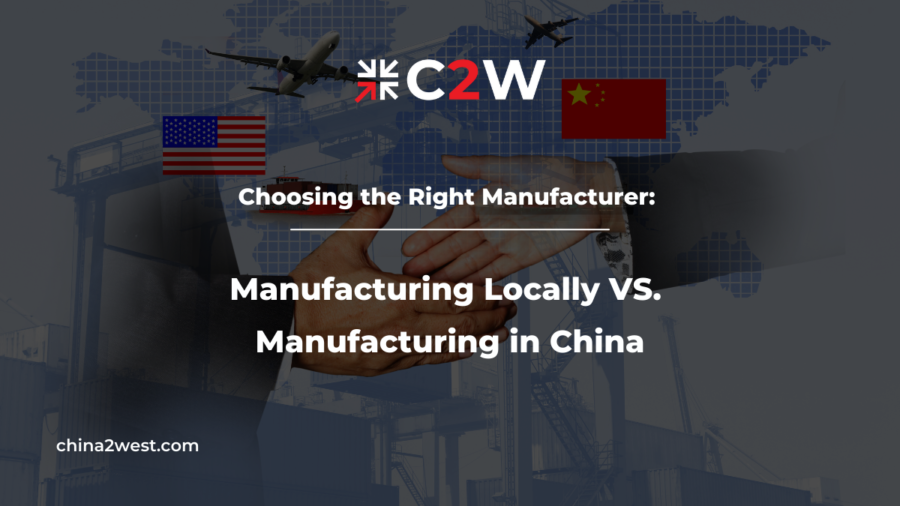You’ve got a brilliant idea and you’re ready to take it to the next level. You’ve got a vision in your head of how your product will look, you know the kind of quality you want, and now you just need to find someone who can build it.
The question remains, though: Where do you start? Should you find someone nearby? What if you’re not sure what you want?
In this guide, we’ll list all details of finding manufacturers near or far for your next project.
Domestic Manufacturing VS. Overseas Manufacturing
If you plan to turn your idea into reality, you might wonder, “are local manufacturing companies better to work with than companies overseas?” The answer can be complicated because there are advantages and disadvantages to each.
To answer this question, there are many important things you should evaluate before making any decisions especially when you are new to the manufacturing field.
It’s a good idea to make a comparison to list all your considerations, such as manufacturing needs, budgets, deadlines, and more.
Keep in mind that you need to think about which one will be best for your business not just based on one factor. For example, when comparing prices between domestic and overseas manufacturers, make sure that they include all shipping costs, duties, taxes, and any other additional fees in their quote. If not, they might not be giving you an accurate picture of what it will cost to produce your product in either location.
Advantages of Domestic Manufacturing
1. Easier Communication
If you choose a local manufacturing company, you will find that there are no language barriers and cultural differences between you and your supplier, which makes it easier to communicate with each other about ideas.
However, when working with a manufacturer in China, chances are you’ll be forced to communicate through email or even instant messaging to get your ideas across. This can result in miscommunication and delays if you don’t effectively convey what you want—it also makes it easier for a supplier to take advantage of your lack of local knowledge.
2. Flexibility
There is no doubt that domestic manufacturing offers greater flexibility than overseas production.
Domestic production is better suited to just-in-time requests. Even sometimes it takes a little longer to produce goods, the products will reach you much faster.
However, an overseas manufacturer may be able to produce a rush order quickly, but getting the product to you in time to meet your schedule may prove difficult or impossible.
In addition, when your order is small, it may not worth manufacturing overseas due to the expensive international shipment. Using domestic sources will give you the flexibility to get products faster, especially if your parts or products require specialized production capabilities.
3. Intellectual Property Rights
When it comes to manufacturing a new product, intellectual property protection may become imperative.
A local manufacturing company usually gives you complete control over the trademarks and intellectual property rights. This allows you a better bargaining position, which makes it easier if you ever need to switch suppliers.
When your product is made overseas, there may be some risk that it will be stolen and duplicated. Even worse when you work with an unreliable factory that could outsource your order to multiple subcontractors.
So, no matter whether manufacturing locally or manufacturing in China, it still might be wise to keep your plans close to your chest until a contract is established.
Advantages of Manufacturing In China
1. Cost-Effective Production
Cost-effective is one of China’s biggest draws for international businesses, with labor costs being much lower than those of major Western countries.
For example, a clothing manufacturer in China can produce an item for as little as $1-$3; whereas in most developed countries you’d expect to pay closer to $10-$20 per item for comparable workmanship and materials.
Streamlined processes, large volumes, and efficient supply chains in China make the whole production process quite cheap. This translates to higher profit margins, increased sales, and more revenue.
2. Easy to Reach
The other thing to keep in mind is if it’ll be easier to contact a manufacturer.
With the improvement of the manufacturing industry, manufacturing in China has become quicker and easier than ever before.
There are thousands of manufacturers with high-quality facilities and equipment waiting for you to come order from them, all having skilled and professional engineers at their disposal who will convert your idea into reality without trouble.
You can easily reach these manufacturers via their websites or some well-known B2B platforms (such as Alibaba).
3. Higher Technology
Now, China also has infrastructure other Asian countries don’t have.
Following the “Made in China 2025” strategy, China is pushing hard to reduce the manufacturing gap between itself and Western countries through investment in high-tech facilities and skilled labor.
The comprehensive transportation networks allow you to source raw materials for your unique products cheaply and easily. And the well-established supply chain systems make it faster to receive your customized products.
Manufacturing in China: China 2 West Can Help You
Choosing who to work with for your project won’t be an easy task.
Keep in mind that work with companies that specialize in your industry and have experience in your field. Avoid those that offer products and services way outside their realm of expertise, as you’ll find they are likely more concerned with placing orders than quality, customer service, and business relationships. They will just place an order, fulfill it, and disappear – they won’t stay around to guide you through manufacturing hurdles.
China 2 West is a British-owned and managed company established in 2005 in Zhuhai City, Guangdong Province, South China Greater Bay Area. With over 15,000 projects completed, there is no wonder why we’ve been able to achieve success. Contact us today.


